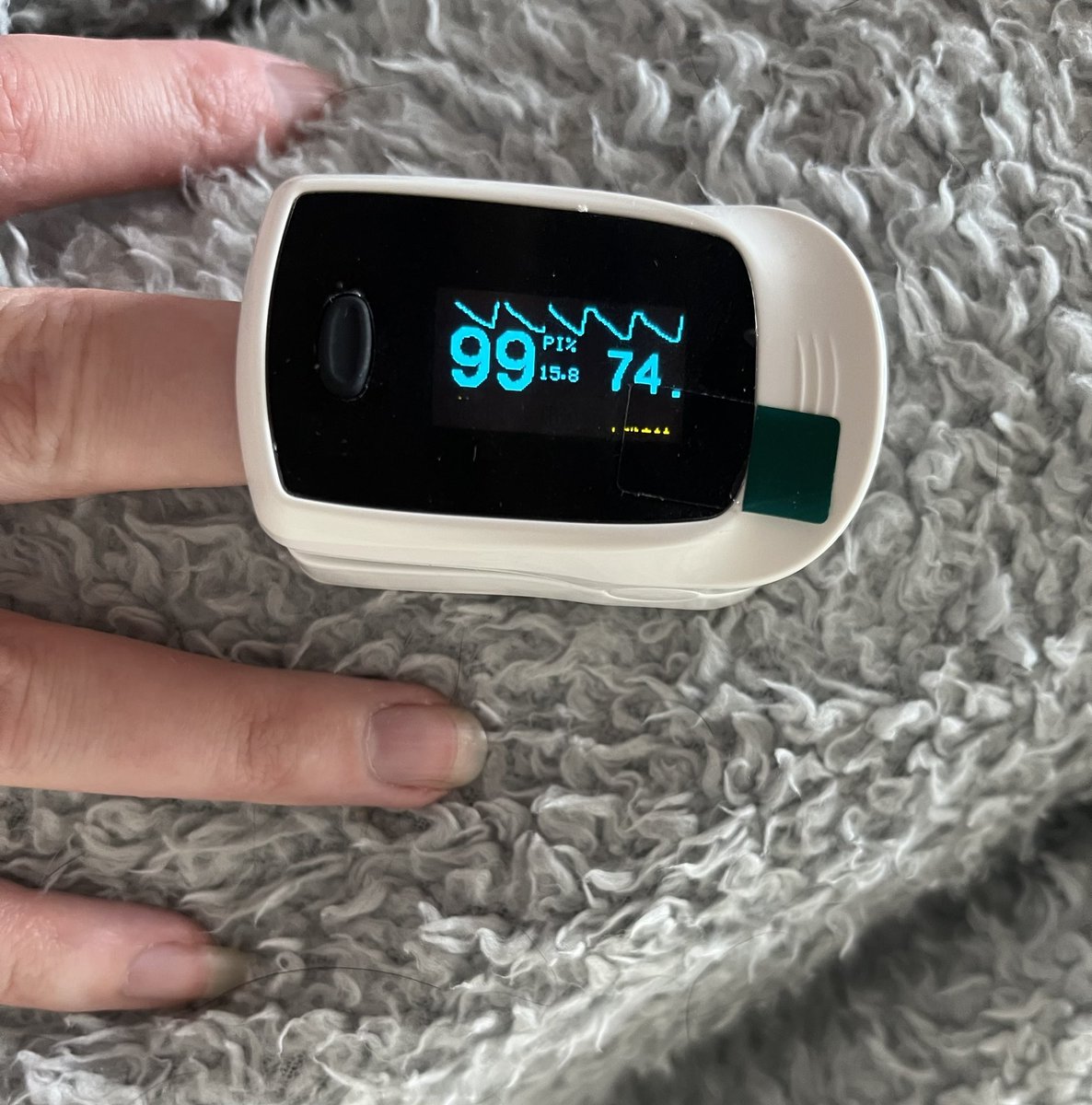PI% info @PanickedFoodie @tessfalor
I’m always hot after I eat my evening meal so decided to check my PI and yep, best I’ve ever seen it (usually under 1.5)! Supports eating causing improved blood flow. But…my SPO2 is the lowest I’ve ever seen it. Never seen it go below 98%
I’m always hot after I eat my evening meal so decided to check my PI and yep, best I’ve ever seen it (usually under 1.5)! Supports eating causing improved blood flow. But…my SPO2 is the lowest I’ve ever seen it. Never seen it go below 98%

Only other times I’ve managed to improve my PI% have been my using a hot water bottle on my abdomen (but it only went from 1.5% to 5.7%), or by laying down in bed & heating myself with a hair dryer, where my PI% went over 15% for the first time.
And I’ve been resting different fingers: each finger has different values but my left hand has consistently lower perfusion than my right, which ties in with blood tests where they can never find a good vein on the left!
Repeated it this morning, feeling better today & managed to get dressed (yesterday was my worst day of the year). SPO2 99% again.
PI% 0.6 before breakfast (on right hand with best circulation) raised to 15.8% after breakfast of hot porridge!

PI% 0.6 before breakfast (on right hand with best circulation) raised to 15.8% after breakfast of hot porridge!


@Really_Richelle maybe GIP induced?
This improved circulation after eating seems to be helping some people in #TheAcidTest clear high overnight lactate levels, whereas for me, my lactate peaks after breakfast. Got to be two subtypes re: lactate I’d say.
This improved circulation after eating seems to be helping some people in #TheAcidTest clear high overnight lactate levels, whereas for me, my lactate peaks after breakfast. Got to be two subtypes re: lactate I’d say.
But after a cold lunch of peanut butter on toast & an apple my PI% hasn’t changed at all: 2.4% (which is typical for my right hand). So I haven’t ruled out heat as being the main factor. 

• • •
Missing some Tweet in this thread? You can try to
force a refresh

 Read on Twitter
Read on Twitter



